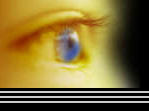The Origin of the King James Version of the Holy Bible
The Protestant denominations are built upon that manuscript
of the Greek New Testament sometimes called the Textus Receptus, or Received Text. During the Dark Ages, the Re- ceived Text
was practically unknown outside the Greek Church. It was restored to Christendom by the labors of that great Dutch scholar,
Erasmus (1466?-1536). The origin of the Received Text goes back, many centuries before, to a great scholar of the Hebrew and
Greek languages named Lucian of Antioch (c. A.D. 250-312). And before Lucian, in the first century, the Apostles themselves
wrote the very first Greek New Testament.
The Apostles’ New Testament (united with the Old Testament) went in three directions in its evangelism. First, within
a generation after the death of the apostles, (if not before), the Old and New Testament manuscripts were translated into
the most beautiful of Latin Bibles ever scribed, called the Itala. The Itala was the Bible of the Celtic branch of the human
family, including Patrick of Ireland, Columba of Scotland, Aiden of England, Hilda the Abbess of Whitby, Dinooth of Wales,
Columbanus of Europe, as well as those simple unobtrusive Christians called the Waldenses, Vaudois, Albigenses, and other
names throughout western Europe. It was these people who, the Bible says, were the true church of Jesus Christ, and not the
Vatican (Rev. 12:6). These various peoples (united in doctrine) kept holy the seventh-day Sabbath. The Reformation owes its
beginning to the Waldensian missionary, Lollard, who enlightened John Wycliffe.
Shortly after the death of the apostles, the second direction of their New
Testament was its translation into the Syriac (a form of Aramaic). This noble Bible, called the Peshitta, meaning “Simple,”
had for centuries a wide circulation in the east, and was carried throughout the Orient. This was the Bible of Papas of Asia,
Aba of Persia, Timothy of Bagdad, The St. Thomas Christians of India, and Adam of China. In the early 9th century, the great
Kobo Daishi, Japan’s mightiest intellect, learned the gospel from this Syriac text during his travels in Asia and carried
its influence to Japan.
The third
direction of the apostle’s manuscripts was to the safe-haven of the Greek Church. Through the scholarship of Lucian,
who edited the apostle’s original manuscripts (as well as translating the Old Testament Hebrew into Greek), he edited
and produced a complete Bible: a collection of the books from Genesis to Revelation.
Well known writers like Jerome, Erasmus, and Luther, and, in the nineteenth
century, John William Burgon and Fenton John Anthony Hort (whether friends or opponents) agree that Lucian was the editor
who passed on to the world the Received Text—the New Testament text which was adopted at the birth of all the great
churches of the Reformation. Not a single church born of the Reformation, such as Lutheran, Calvinist, Anglican, Baptist,
Presbyterian, Methodist, Congregational, or Adventist, adopted any other Bible than that whose New Testament text came down
from Lucian. The text which Lucian gave to the world was to all intents pure and correct. Even his opponents declare that
there are no Greek New Testaments older than Lucian’s, and that with it agree the great mass of Greek manuscripts.
In the bitter time of Christianity’s
struggle to escape papal tyranny, forty-seven scholars, commissioned by King James, translated the Word of GOD into the most
eloquent & poetic of all languages: Middle English. It refines the character; it ennobles the intellect; it exposes the
traps of Satan; it reveals that only GOD can fulfill the heaven-born needs of man.

